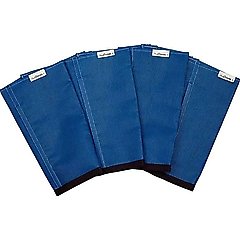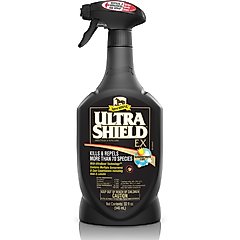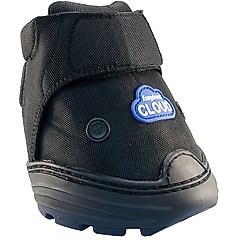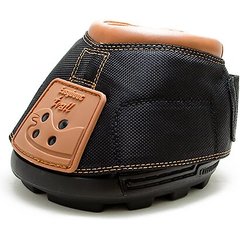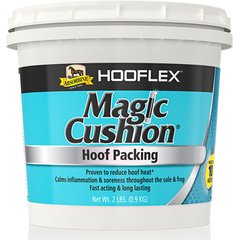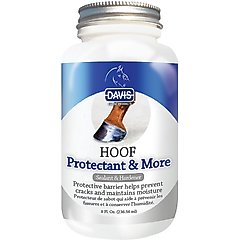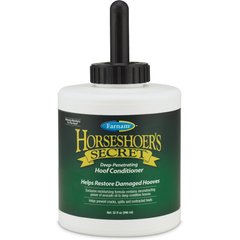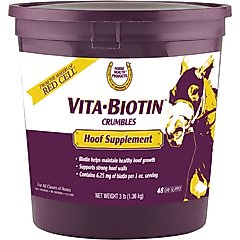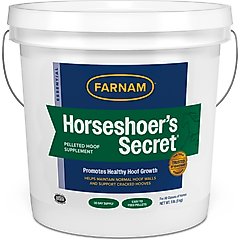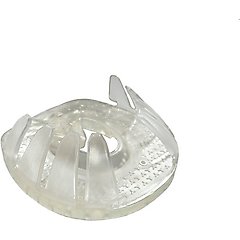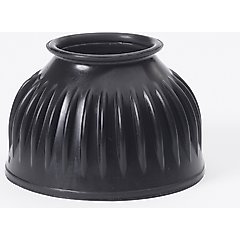What To Do When Your Horse Keeps Losing Their Shoes

Photo by nordantin/iStock / Getty Images Plus via Getty Images
Few things derail a riding session like your horse losing a shoe—even worse when it happens frequently.
If your horse is auditioning for the role of Cinderella and you’re not sure why, we’ve gathered advice from a farrier and a veterinarian to help you keep your horse’s shoes on.
Key Takeaways
- Improper shoeing, poor horsemanship, too-long shoeing intervals, and soundness issues can contribute to horses losing shoes.
- Wet or muddy conditions and subpar hoof quality are also common triggers for shoe loss.
- If your horse loses a shoe, make sure all nails have been removed, then protect the hoof with a hoof boot while waiting for your farrier to reset the shoe.
- Consult with your farrier and veterinarian if your horse continues to lose shoes. X-rays could also be helpful.
Common Reasons Why Horses Lose Shoes
A number of factors can cause a horse to lose a shoe. Do any of these conditions apply to your horse?
Poor Hoof Quality
The health of your horse’s hooves is critical to him being able to keep shoes on. Strong hoof walls are particularly important.
“The more rigid the hoof is, the fewer issues it has,” says farrier Lee Olsen, owner of Olsen Equine CJF in Weatherford, Texas. “Even if you do lose a shoe, with high nails that are in a quality hoof wall, they normally pull out clean and don’t take any hoof wall [with them].”
Inadequate nutrition can also cause poor hoof quality.
Some horses don’t grow hooves as strong as others. This could be due to a particular breed’s disposition or genetics—not always poor diet.
Generally, white feet on horses are softer and may lose shoes more frequently than a dark-footed horse, says Christine Sutherland, DVM, a veterinarian at Reata Equine Hospital in Weatherford.

Jacqueline Nix/iStock / Getty Images Plus via Getty Images
Improper Shoeing
When a hoof is trimmed so it’s balanced, the horse moves better. When the horse moves better, they’re less likely to lose shoes. They’re also less likely to become lame, which can cause the horse to shorten their stride—which also leads to losing shoes.
Long Intervals Between Shoeing
Olsen recommends five-week intervals between shoeing and strongly suggests never going over six weeks.
“Horse’s feet grow daily and grow out of balance, so the longer you wait to shoe your horse, the higher chance of losing shoes,” he says.
“If the horse’s foot is allowed to get really long, it can be very hard to make the necessary changes and can lead to things like white line disease and abscesses,” Dr. Sutherland adds.
Environmental Conditions
When a horse’s hoof gets wet in areas such as muddy pastures, it acts as a sponge and has a lot of expansion and contraction. This can loosen clinches and nails and lead to lost shoes.
A stall that is not cleaned regularly can also degrade the hoof. Thrush caused by an unclean stall can certainly cause shoes to come off and the quality of the foot to deteriorate.
Thin fencing in turnout pens can cause horses to lose shoes as well, if the material gets between the shoe and hoof when a horse kicks out.
Another common reason for shoe loss during the summer months is when it’s dry and horses are stomping flies. Hooves get dried out and crack from stomping, which causes shoes to become loose and fall off. Olsen recommends using fly boots, like these from Shoofly, and a fly spray, like Absorbine UltraShield, to combat issues with insects.
Recommended Products
Horse Behavior and Conformation
Most shoes are lost during turnout, which could be due to a horse’s erratic movement while playing, frolicking, and interacting with other horses.
Conformational problems can also contribute to shoe loss. For example, if a horse’s foot naturally turns out, they can clip the back or side of their hoof with the opposite leg, which can pull a shoe off.
A horse who overreaches with their hind legs will similarly be more likely to pull off shoes.
First Response: What To Do After a Shoe Is Lost
If your horse does lose a shoe, follow these steps to reduce injury and damage to the hoof.
- Inspect the Hoof
First, check your horse’s hoof for injuries or cracks. Make sure the shoe is completely removed.
- Protect the Hoof
You’ll want to protect the hoof if your horse is not comfortable barefoot, has hoof problems, or is at risk of chipping the unshod hoof. Olsen recommends using hoof boots to protect the hoof.
Recommended Products
Also put a boot on the opposite foot to even out the horse’s balance and traction.
If you’re not able to apply a temporary boot, reach out to your veterinarian to determine the best way to keep the hoof covered.
A quick-and-easy method is to apply Magic Cushion to the sole of the foot and add a handful of clean shavings to set it. This will help protect the hoof.
Recommended Product
“That will save your foot from breaking up, and it’ll save you from a hoof abscess,” Olsen says.
- Contact Your Farrier
While a lost shoe is not an emergency requiring an immediate call to your farrier, contact them to see your horse as soon as possible. Where your horse is in the shoeing cycle when he loses a shoe can make a difference.
For example, if the shoe is lost at the end of a cycle when your horse is nearly due to be shod again, there’s less chance of a sore foot than if it’s early in the shoeing cycle, Olsen explains. That’s because there’s extra hoof.
Long-Term Solutions and Preventative Measures
How can you prevent a frustrating recurring shoe loss problem?
Improve Hoof Health
Your horse’s hoof capsule has a natural periople, a waxy protective layer, that seals the foot and keeps the correct level of moisture.
“The sole is supposed to have 25% moisture and the frog 50%,” Olsen says. “Too much moisture is bad, [and] too dry is bad; and when the environment goes from wet to dry, the feet can fall apart from expansion and contraction.”
Help keep your horse’s feet in top shape by following these tips:
- Use a sealant, like Davis Hoof Protectant. Rasping the hoof wall during shoeing opens up the hoof to be more porous and allows for easier moisture transfer, which a sealant can help combat.
Recommended Product
- Use a daily hoof conditioner, like Horseshoer’s Secret. A daily hoof conditioner can help maintain the moisture balance in the hoof.
Recommended Product
- Feed hoof health supplements containing biotin (vitamin B7) and amino acids. Daily hoof supplements can provide the nutritional building blocks to help support healthy hoof growth and strength. Work with your veterinarian to choose the right supplements for your unique horse.
Recommended Products
Work With a Skilled Farrier
Keep your horse on a regimented shoeing schedule with appointments five weeks apart for performance horses, four weeks for problematic horses—and never go over six weeks.
“Regular trimming and shoeing are crucial because the hoof is always growing,” Olsen says. “It takes eight months to a year to grow an entire hoof, and hooves do not grow in balance. So the more problematic your horse’s hooves are, the sooner you need to shoe them.”
You can use glue-on shoes, like the EasyCare EasyShoe Speed Metal Horseshoe. However, Olsen recommends using glue-ons only in extreme cases, such as when a horse loses a good portion of its hoof wall or has laminitis due to sensitive feet.
Recommended Product
Manage the Environment
Turnout is very important for horses, mentally, physically, and even for hoof health. But the conditions of that turnout area make a difference.
“Their feet naturally clean themselves when being turned out,” Olsen says. “But anytime it’s very wet because your pastures don’t drain correctly, or the horses are in standing water, you need to get them out of that area to keep them out of the mud.”
Address Gait and Conformation Issues
A collaboration between your veterinarian and your farrier is ideal.
Your veterinarian can take annual X-ray images of your horse’s feet to show your farrier.
Dr. Sutherland says a soundness exam can help point out neurological issues such as equine protozoal myeloencephalitis (EPM), which can cause a horse to stride abnormally and pull off shoes.
For horses who routinely clip their front hooves, bell boots—when applied correctly—can help reduce lost shoes due to overreaching. “The boots must touch the ground,” Olsen says. “Not just the heel bulbs, the shoe too.”
Recommended Product
Bell boots are helpful for turnout and riding, but Dr. Sutherland cautions against letting your horse wear them around the clock. “Be careful and watch that their pasterns don’t get sore,” she says.
When To Seek Veterinary Help
If your horse is losing a shoe every cycle and your environment is not a contributor, book an appointment with your veterinarian.
As your horse’s owner, establish a baseline of your horse’s soundness and movement, and if you notice something isn’t right, contact your veterinarian.
FAQs About Horses Losing Shoes
How long can a horse go with a missing shoe?
If your horse is comfortable being barefoot, they can wait a little while, especially if you’re not using the horse for riding. If your horse has foot problems or is being used frequently, get their shoe replaced quickly.
Is it bad to ride a horse with a loose or missing shoe?
If you’re riding on rocks or at higher speeds, it’s a bad idea to ride a horse with a loose or missing shoe. If you’re riding on a smooth arena at lower speeds, you should be OK.
What happens to a horse with no shoes?
The basic job of a shoe is protection, performance, and mechanics. Without shoes, the horse has lost all three benefits, unless their hooves have been trimmed specifically to be barefoot.
